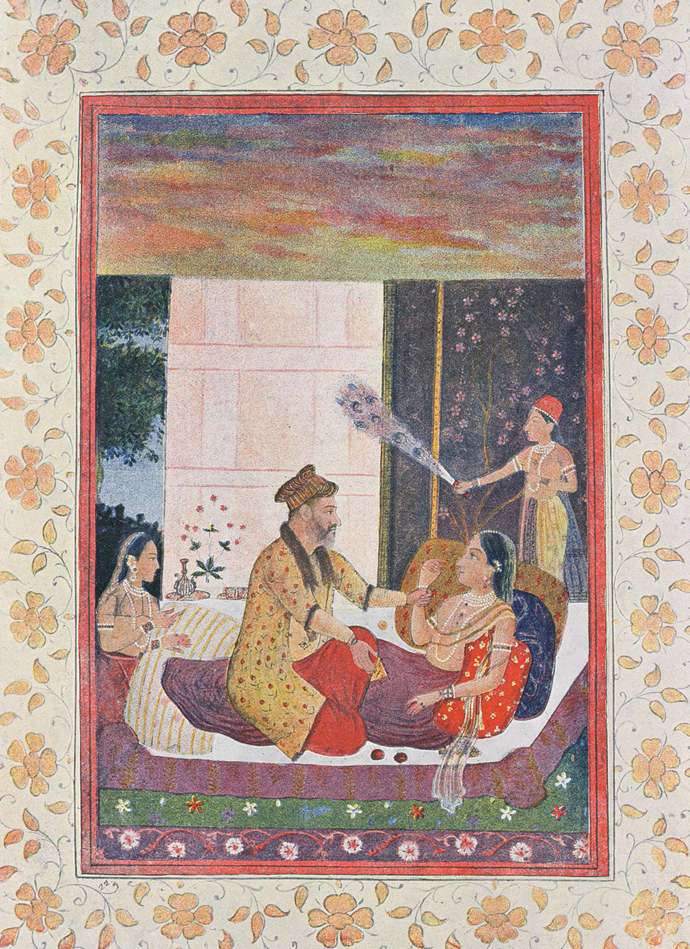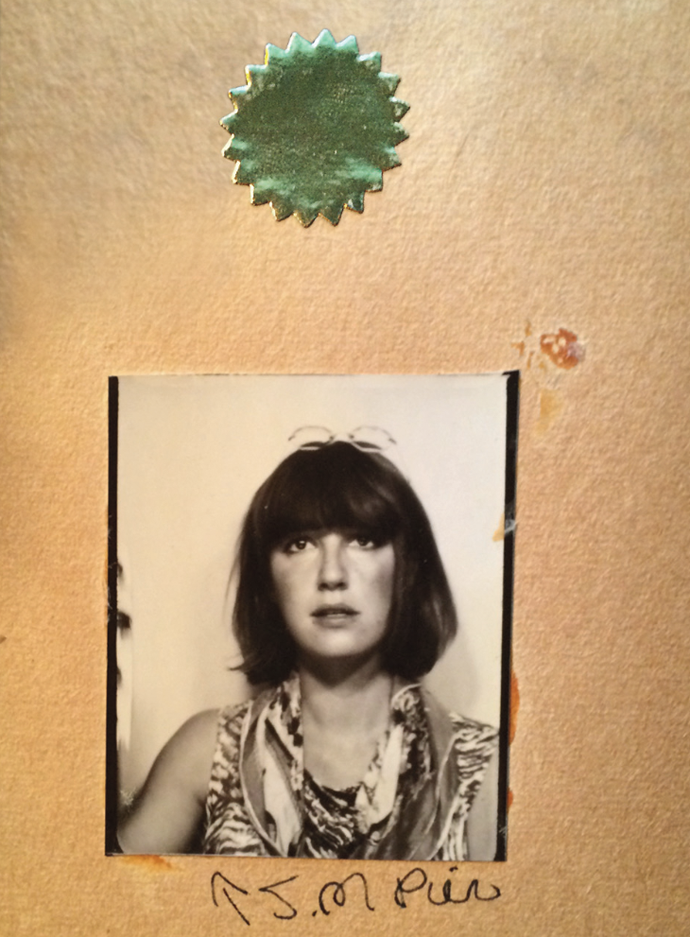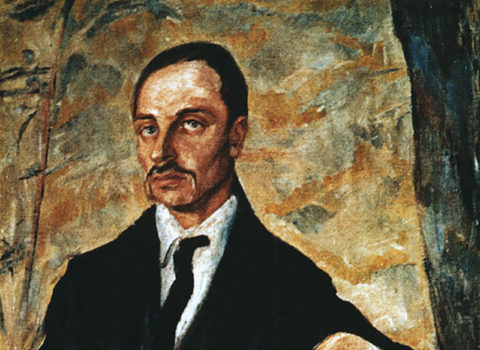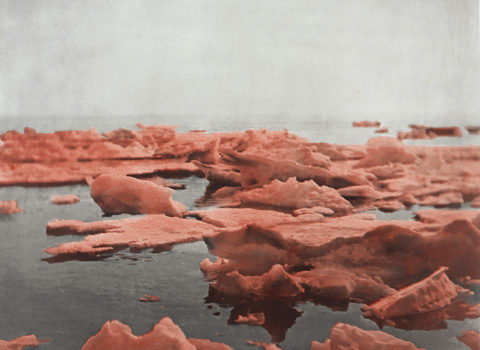Discussed in this essay:
99 Nights in Logar, by Jamil Jan Kochai. Viking. 288 pages. $25.
Hollywood’s Eve: Eve Babitz and the Secret History of L.A., by Lili Anolik. Scribner. 288 pages. $26.
The Street and The Narrows, by Ann Petry. The Library of America. 875 pages. $35
Could there be a more alarming role model for a writer than Scheherazade? You tell a story and, worst case, your head is cut off. Best case: the would-be decapitator is so enthralled that you are spared, and get to marry him. Storytelling is, The Thousand and One Nights suggests, a high-stakes seduction, a power game in which pleasure is intricately linked with pain and fear. This is one of the barbed jokes that seem to lurk beneath Jamil Jan Kochai’s debut novel 99 Nights in Logar (Viking, $25), a funny, lightly surreal evocation of life in rural Afghanistan which partly aims, in entertaining American readers, to rouse their sympathy for the real-life Afghans who have been suffering under US occupation for seventeen years now. Like the author, the protagonist, Marwand, is brought up in California, but the novel begins when, in 2005, just shy of his teens, he and his parents and brothers spend several months visiting their extended family in Logar province, near the eastern border with Pakistan.

Scheherazade Seized by the King, an 1895 illustration from The Thousand and One Nights © Private Collection/Bridgeman Images.
The book is structured, at least initially, as a Boys’ Own adventure, with Marwand and his cousins setting out in search of Budabash, the family dog who has bitten off part of Marwand’s finger. Yet it’s driven by a profusion of tales within tales, which begin and break off, resume and recur, swerve or blossom into one another. Grandmothers, uncles, and cousins hand down traditional fables of kings and lost treasures, along with gossip about the neighbors and stories of the Soviet invaders in the 1980s. The boys, meanwhile, lie their way out of various scrapes, fabricating long, elaborate tales of woe. Often two characters will each try to get their way by relating dueling versions of events: “See,” a young wannabe Taliban fighter says, of the prisoners he and his comrade have caught in a drug deal, “they’ve got different stories and we can’t figure out which one to beat and which one to shoot, and so we’ll shoot them both.”
Within a few pages, the boys, stranded on the road, encounter a series of representative types, including a blue-eyed trickster, Jawed the Thief; Jawed’s five simultaneous fiancées (all of them cousins who have compared notes and are out for vengeance); a group of indistinguishable white American soldiers; and a laborer who comes “slopping up to us” fully coated in wet cement, like some creature from the lagoon. This last man explains the Penelope-like process that keeps the road he works on forever unfinished:
So while every morning the Kabuli government orders the road to be repaved, rebuilt, and reconstructed, every night the Taliban come back to blow it up again. As long as the Americans are footing the bill, the contractors just subcontract the project to a lesser contractor, pocketing millions, and that subcontractor does the same thing to another subcontractor. Until the roads are never actually built and I’m never out of work.
Kochai allows the occupation to shape the atmosphere within which the characters must survive without upstaging their everyday concerns. It’s a menacing undercurrent that could burst forth at any moment: “Odd,” Marwand thinks, “how a few miles could turn bombs into lullabies.” Out in the open, the boys listen for
every footstep of every killer in Logar: the psychopathic white boys, the ravenous bandits, the Ts and the gunmen and the drug runners, the kidney kidnappers, the robots in the sky, the wolves from the mountains and the coyotes from the rivers, the witches in the cesspit, the djinn in the trees, the ghosts from the graveyards, and the monsters in the maze.
The magical elements don’t seem so much more far-fetched than the drones in the sky, and the book’s comic register turns out to be wildly elastic, making room, like The Thousand and One Nights, for floods and sickness and beatings and murders, along with bawdy escapades such as the boys’ infiltration, in stolen burkas, of the women’s section of a wedding party. The comedy helps restore a sense of the weight and substance of individual Afghan lives for readers so inured to the large numbers of reported deaths over many years.
Toward the end, a crucial story that keeps surfacing in tantalizing fragments, about the death of Watak, Marwand’s uncle, is finally told in its entirety—in Pashto. There’s no translation, unless you want to try your luck pasting the text into an automated translation engine, as I did, with predictably mixed results (“I do not have the same reason because I do not let life live and we die by killing a bird without killing them”). Wrongfooted, you endure a brief reversal of the linguistic dominance you can take for granted elsewhere. For these few pages, no concession at all is made to the English-speaking reader who up till now has been so lavishly entertained.

A self-portrait made at the Santa Monica Pier, c. 1969, from Eve Babitz’s scrapbook (detail). Courtesy Mirandi Babitz
Another devotee of The Thousand and One Nights is the writer and hard-partying muse Eve Babitz, who in her teens, according to her sister, modeled herself on Scheherazade. The author of five works of emphatically non-fictional fiction, which primarily celebrate her extended flirtation with her own persona, her many glitzy friends and lovers, and her city, Los Angeles, Babitz has in the past few years enjoyed a revival that far eclipses her original success. Several of her books have been reissued, beginning with the 1974 debut collection Eve’s Hollywood, and she is now the subject of a quasi-biography by the writer Lili Anolik, whose profile of Babitz in Vanity Fair put her back on the map. I say “quasi” because Anolik’s Hollywood’s Eve: Eve Babitz and the Secret History of L.A. (Scribner, $26) starts by batting aside any duties its author imagines a conventional biographer to have, including “narrative structure and logic,” “explanations,” “conclusions,” “facts, dates, timelines, [or] verifiable sources.” Just as Babitz introduced her slender 1977 masterpiece Slow Days, Fast Company as an effort to seduce not the reader but a disinterested boyfriend, so Anolik announces this book as her own wayward, digressive romance. The breeziness is a feint: Anolik has spent years on research, working meticulously to fill in the blanks where Babitz or her compadres had been too drunk to remember. The result is a perky yet wistful tribute from a self-described “Little Miss Priss, married to my college sweetheart, never taken a drug” to a hedonist so shameless as to seem almost prelapsarian, a woman who “really and truly . . . doesn’t give a fuck.”
At times, Anolik’s love produces frothy overstatement: I’m not convinced that Babitz’s willingness to sleep with Annie Leibovitz, or for that matter her blithely catholic taste in men, quite rises to the level of “polymorphously perverse.” Mostly, though, Anolik’s fantasy Eve reflects Babitz’s brilliance at self-presentation. Babitz’s great gift as a writer is for the languorous, inviting tone, as if she’s a cat just waking up from a sun-soaked nap. (In Slow Days, for instance, she writes of “air so dry that bougainvillea picked would embalm in the heat and last forever like Japanese paper flowers.”) Since Babitz hates to talk craft, it’s only from her sometime boyfriend Paul Ruscha (brother of Ed, another of her conquests) that Anolik gleans a sense of her not-so-casual work ethic—she’d hand him a new draft whenever he slept over, so that “I ended up reading everything she wrote nine or ten times.” She was invested in the appearance of laziness, spontaneity, and pleasure, and even now, in Anolik’s account, some of life’s thornier problems—rape, beatings, suicides, hoarding—slide by in a charismatic haze. Disfigured by extensive third-degree burns after accidentally setting herself on fire while trying to light up at the wheel of her VW Bug in 1997, she tells Anolik she’s a mermaid now, an image whose grotesque eroticism only stokes the author’s crush. While recuperating in the hospital, she reassured her family that “people think this will make me a better person. It won’t.”
Until recently, Babitz had probably been seen naked by far more of the American public than had read her writing, thanks to the notorious Julian Wasser shot of her at twenty, sitting across the chess board from her admirably undistracted opponent, Marcel Duchamp. But in spite of her apparent proclivity for self-exposure, Babitz proves elusive, only revealing what we could already guess: “Harrison could fuck,” she says of the young Ford. “Nine people a day. It’s a talent. . . . Warren [Beatty] could only do six.” Steve Martin describes her as a rare and elevated kind of star-fucker, a prophet: “Nobody was famous yet,” he remembers. “Eve knew who the talented ones were.”
Anolik identifies Babitz in her chronicling of LA as the anti-Didion—casual, optimistic—a view Babitz herself was the first to endorse. In Eve’s Hollywood she acknowledges her friends “the Didion?Dunnes—for having to be who I am not.” Didion evoked the October of the Santa Ana winds as a month when “every voice seems a scream. It is the season of suicide and divorce and prickly dread.” For Babitz, those same winds were an excuse to dance outside, initiate threesomes, and make out with her ex-boyfriends’ girlfriends in public, while October was “a divorce month since people want to get it over with before the holidays.” Whether feigned or not, her exuberant frivolity allowed those glimpses of suffering she did let through to linger in the mind.
So audacious was Babitz’s self-involvement, you could read most of her oeuvre without learning anything about what else was going on in the 1960s and 1970s. What survives of Babitz will have to be her style—the literary kind, that is. The midcentury writer Ann Petry, two of whose novels, The Street and The Narrows, are now being republished in a single volume by the Library of America ($35), could be said to have the opposite problem. Remembered mainly as a practitioner of the protest novel in the vein of Richard Wright—in which social environment tends to determine fate—she’s often underrated as a stylist. Her first and best-known book, The Street, in which impoverished Lutie Johnson struggles to keep herself and her son afloat in Harlem, sold more than a million copies when it appeared in 1946. Vivid and tightly plotted, it places its spirited heroine in a slow-springing trap, showing how every effort she makes to better her circumstances only tightens the net around her: working for a wealthy family takes her away from her child and speeds the collapse of her marriage; the apartment she manages to rent puts her at the mercy of the cramped building’s predatory super. The story is grim—dark and hemmed-in—but Petry manages to wring an array of color and feeling from Lutie’s doomed struggle—the description of the nightclub where she auditions as a singer, for instance, shifts with her mood, reflecting her hopes in the “soft, moving bands of light” that send a rainbow across the empty dance floor and her anxieties in the tux-clad bouncers whose “heads drew back into their shoulders as though they were dodging punches.”
Though The Street was undeniably impressive, Petry drastically expanded the range of her ambitions in her third novel, The Narrows (1953). The book centers on Lincoln “Link” Williams, a Dartmouth graduate living and tending bar in the titular black neighborhood in Monmouth, a fictional Connecticut town. He takes up with a white woman who turns out to be a married heiress, Camilla Treadway Sheffield, the scion of the town’s dominant family. Catastrophe ensues—a false rape accusation, a car crash, a kidnapping—yet while The Narrows shares the high drama and social conscience of The Street, what’s striking is the formal leap Petry took between the two. The Narrows draws on a much larger cast of characters, and, as it follows the inner lives of each in great detail, attains a polyphony that enriches and complicates the novel’s worldview. The rhythms of people’s thoughts—sudden fears and drawn-out self-justifications, the memories that unexpectedly assault them—continually invade the structure of Petry’s sentences. A husband intuiting that he’s been cuckolded thinks first in shocked staccato fragments, then in a looping, catching rush:
Starched white shirt. No necktie. Collar open at the throat. Sleeves rolled up. . . . He saw a man put together like a statue, no fat on him anywhere, [with] a face like the face of one of the early popes . . . a cruel face, with eyes that saw everything and disclosed nothing, with a narrowlipped, cruel mouth, a shark’s mouth.
The thoughts of a young man wielding a gun sway and stutter, conveying weakness and hesitancy:
He lifted his arm, tried to aim the gun, and his hand was shaking so that the gun went back and forth, back and forth, as though he had reverted to infancy and was waving byebye with it, his hand shaking and trembling so violently that the gun began moving in wide loose circles.
It’s this roving, generous novelistic eye, constrained before by the Gothic-tinged claustrophobia of The Street, that makes The Narrows funnier and more buoyant despite its plot. Link’s adoptive mother Abbie is among other things a snob, thrilled to rent her room to the Treadway butler in his crisp tailoring and smart shoes, and crushed when, too late to renege, she meets his loud, voluptuous, blues-singing wife Mamie, whose footwear alone would have been enough to raise the alarm. And Link wryly reflects on the earnest, simplistic sociological analyses of his dates, “those Vassar-Wellesley housing-crime experts”:
Most of them were put together all right but they talked and talked and talked about housing and crime, about Stalin and Churchill and Roosevelt and housing and crime and Churchill and Roosevelt and Stalin. And they all had names like Betsy and Karen.
In a short 1950 essay reprinted here, Petry contested the notion, then “as fashionable as Dior dresses,” that art with any discernible political meaning must be aesthetically worthless. She even tentatively made the case that
the finest novels are basically novels of social criticism, some obviously and intentionally, others less obviously, unintentionally, from Crime and Punishment, to Ulysses, to Remembrance of Things Past.
She noted, too, that the public seemed undeterred by critics’ dismissals of protest novels, perhaps because readers have “a streak of masochism.” Perhaps, but The Narrows suggests that she knew there are worse ways to ensure a hearing than to show your listener a good time.



































































































